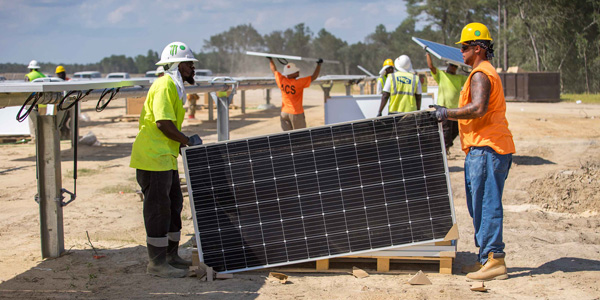By Amanda Durish Cook
Montana regulators last week found themselves at the center of yet another court case regarding the rates offered to the small solar producers — this one stemming from a 2016 decision to suspend those rates at the request of the state’s largest utility.
Cypress Creek Renewables filed suit in the U.S. District Court for Montana alleging that the Public Service Commission’s action violated the Public Utility Regulatory Policies Act by denying solar developers the right to earn the PURPA rates in effect when they originally committed to sell their power to NorthWestern Energy.
Under PURPA, utilities like NorthWestern are obligated to purchase electricity from qualifying facilities at avoided-cost rates that reflect a utility’s own cost to build new generation. The federal law leaves it to each state to determine both the rate and when a legally enforceable obligation (LEO) begins, barring any conflict with FERC regulations.
In November, the Montana PSC voted to reduce the standard PURPA contract length from 25 to 15 years and cut the energy rate available to renewable energy projects up to 3 MW from $66/MWh to $31/MWh.
But that move came after the PSC voted to allow NorthWestern to suspend its PURPA rates in June 2016 after the utility complained that the rates exceeded its avoided costs for new generation. The PSC grandfathered in facilities that had completed their agreements with NorthWestern prior to the June 16, 2016, date of the order but added the stipulation that QFs must have obtained interconnection agreements before that date to earn the previous rates.
In its lawsuit, Cypress Creek says that 13 of its solar projects that had not obtained interconnection agreements by that date are still entitled to receive the old purchase rate and contract length.
“PURPA further requires that state energy regulators like defendants recognize that, where a QF unequivocally commits to sell its output to a utility, it establishes a ‘legally enforceable obligation’ on the part of the QF to sell, and on the part of the utility to purchase, the QF’s output at the utility’s avoided-cost rate, calculated at the time the obligation is incurred,” the company wrote.
Cypress Creek also argues that at a June 9, 2016, Montana PSC hearing, NorthWestern acknowledged it was obligated under federal law to enter into long-term contracts for the 13 projects under Montana’s previous PURPA rate.
The company’s argument relies on a 2016 FERC declaratory order that found the Montana PSC violated PURPA by requiring QFs to have power purchase agreements and interconnection agreements with utilities to create a LEO, finding that the arrangement give utilities too much control over when the obligation occurs. (See FERC Declares Montana QF Requirements Illegal.)
The Montana PSC maintains that its LEO standard is still state law and has called FERC’s order nonbinding unless it is upheld by a district federal court.
“The petitioners are essentially trying to enforce FERC’s declaratory order in which the [commission] took issue with the piece of the Montana PSC’s legally enforceable obligation test, which required a qualifying facility to obtain a signed interconnection agreement,” said Montana PSC Communications Director Chris Puyear. “Importantly, FERC said nothing of the commission’s decision to suspend the rate and contract terms available to qualifying facilities up to 3 MW in size.”
Puyear pointed out that the rate available to QFs is voluntary and can be suspended at any time.
Still, the PSC disagrees that Cypress Creek had a LEO to the old contract terms on the 13 projects, as the complaint argues.
“The commission’s standard is less rigorous than many other states, some of which require a qualifying facility to be near the end of construction before a LEO can be established,” Puyear said. “While the commission remains open to revisiting its LEO test in the future, absolutely no evidence has been presented which shows that the current LEO test disadvantages qualifying facilities.”
Cypress Creek sees it differently.
“Before this rate change, the [plaintiffs] had fully committed to sell their output to NorthWestern, creating their legally enforceable obligation to sell — and NorthWestern’s statutory obligation to purchase. … NorthWestern repeatedly conceded that it had reached a final (if unsigned) contractual agreement with the QFs prior to June 16, 2016,” the company said.
Cypress Creek said it received “continued” assurances from NorthWestern in May and June 2016 that the old rates and contract lengths would apply to the 13 projects.
The company — along with Vote Solar and the Montana Environmental Information Center — is also a co-complainant in a state case alleging that the PSC last year “drastically and unreasonably” reduced the state’s PURPA standard contract length and energy rate, dealing a fatal blow to future small solar development in Montana. (See Montana PURPA Solar Saga Continues in State Court.)
In January, Cypress Creek reported its strongest-ever construction growth rate, having built 1 GW of solar installations over the previous 18 months.




